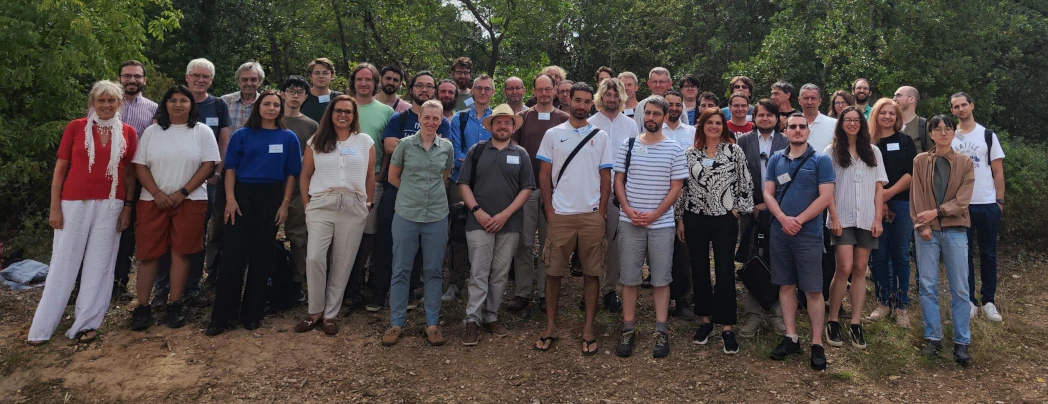Monday
proofs and synthetic mathematics
09:15
Joost Joosten
10:10
Break
11:10
Benno van den Berg
11:40
Felix Cherubini
12:20
Break
12:30
Lunch
14:30
Working group
16:50
Peter LeFanu Lumsdaine
17:20
Break
17:40
18:10
Quentin Schroeder
18:40
Break
19:30
Dinner
Tuesday
categories
09:15
Emily Riehl
10:10
Break
10:40
Alex Simpson
11:30
Jacopo Emmenegger
12:00
Group picture
12:30
Lunch
14:30
16:00
Sophie d'Espalungue
16:40
Break
17:10
Ulrik Buchholtz
18:00
El Mehdi Cherradi
18:30
Jonathan Weinberger
19:00
Break
19:30
Dinner
20:45
Evening session
Wednesday
set-theoretic realizability
09:15
Laura Fontanella
10:10
Break
10:30
Jacopo Furlan
11:00
Freek Geerligs
11:40
Hugo Moeneclaey
12:10
12:20
Unallocated/Buffer
12:30
Lunch
19:30
Dinner
20:45
Evening session
21:15
Evening session
Thursday
types, realizability and algebra
09:15
Pierre-Marie Pédrot
10:10
Break
10:40
Étienne Miquey
11:30
Yannick Forster
12:20
Unallocated/Buffer
12:30
Lunch
14:00
14:35
Unallocated/Buffer
14:50
Working group
15:30
Working group
16:20
Mohamed Barakat
17:10
Break
17:40
19:00
Break
19:30
Conference dinner
20:45
Evening session
23:00
Evening session
Friday
more tantalizing topics
09:10
09:40
Tom de Jong
10:10
Break
10:25
11:05
11:55
12:25
Unallocated/Buffer
12:30
Lunch
19:30
Dinner
